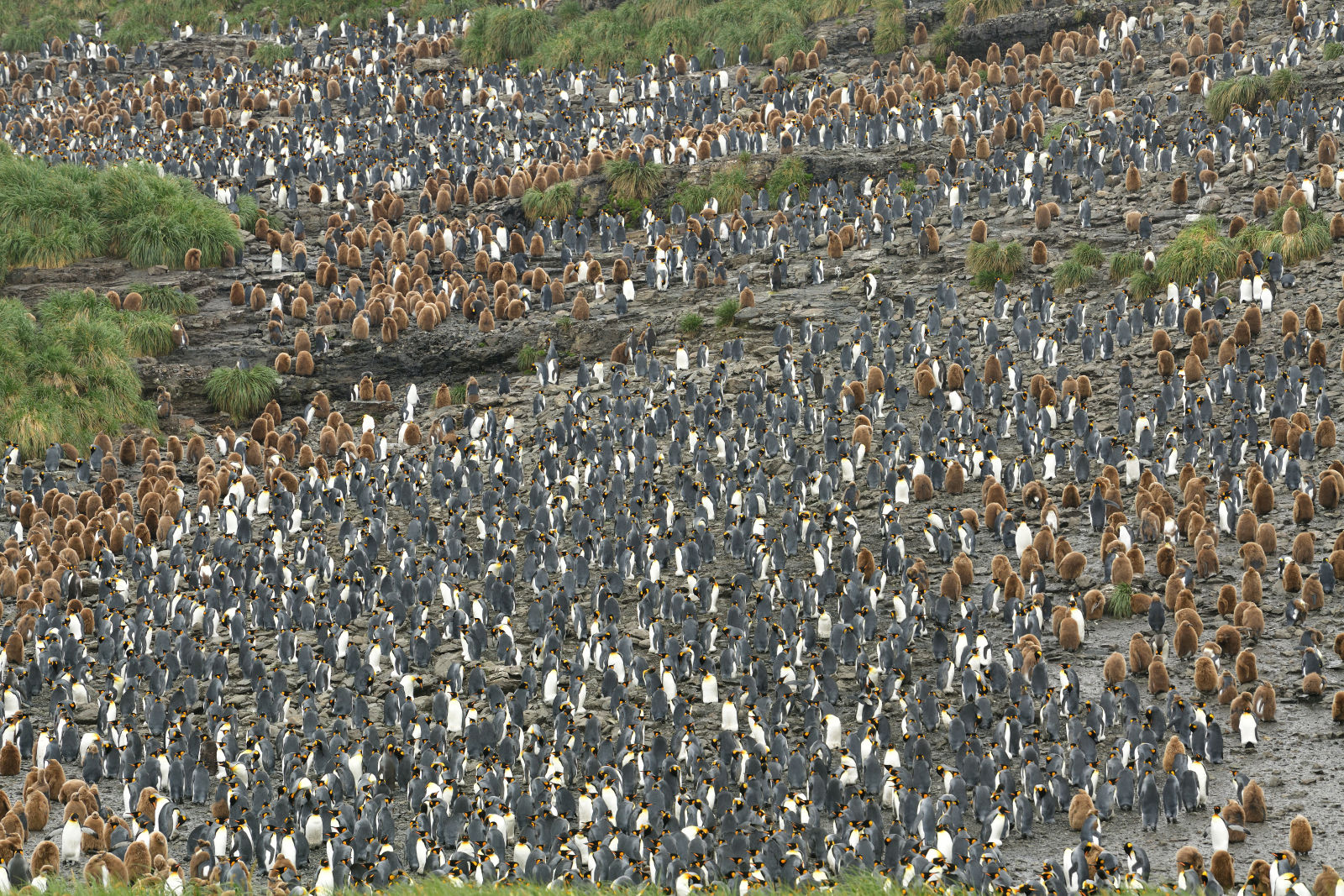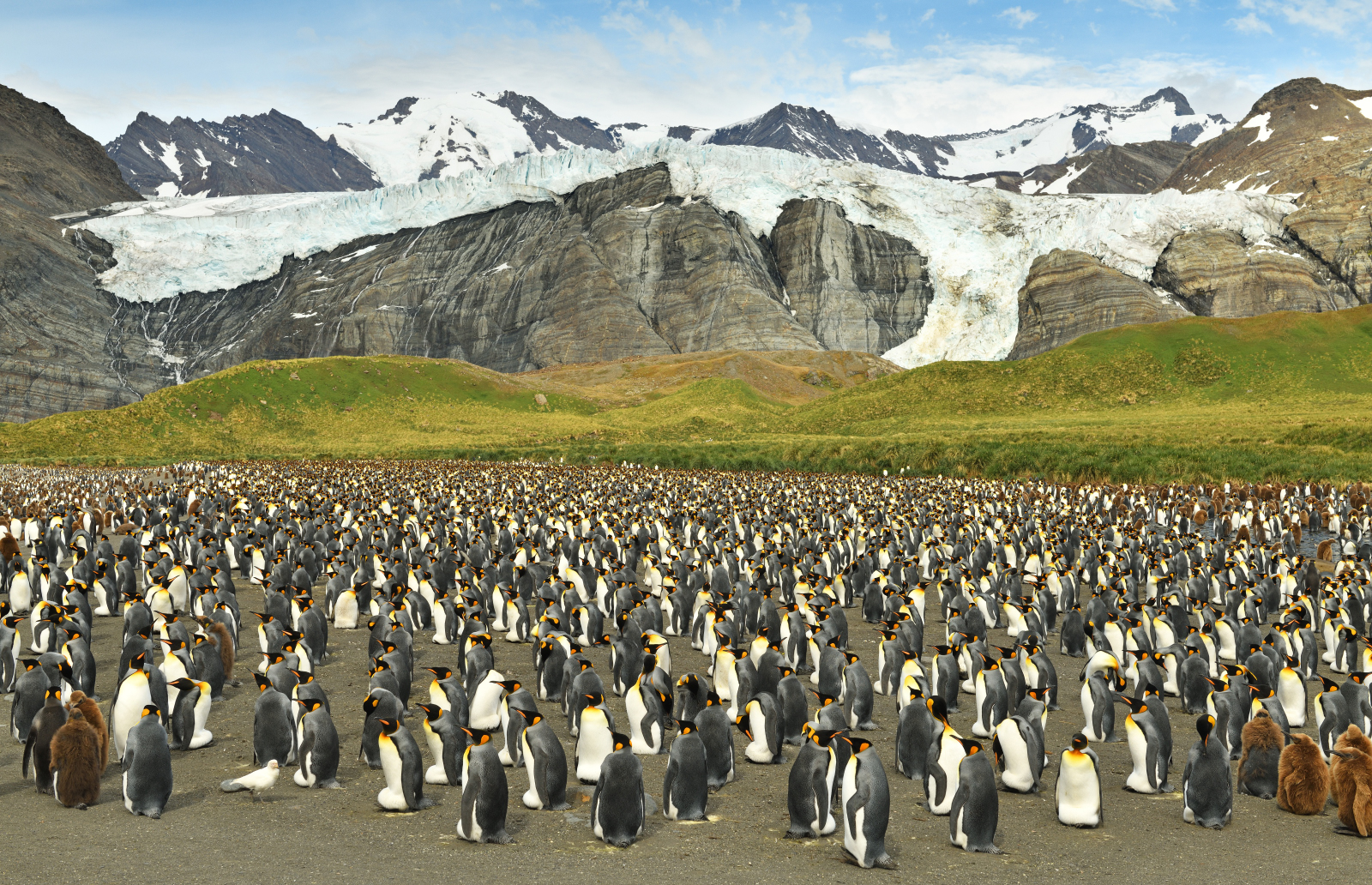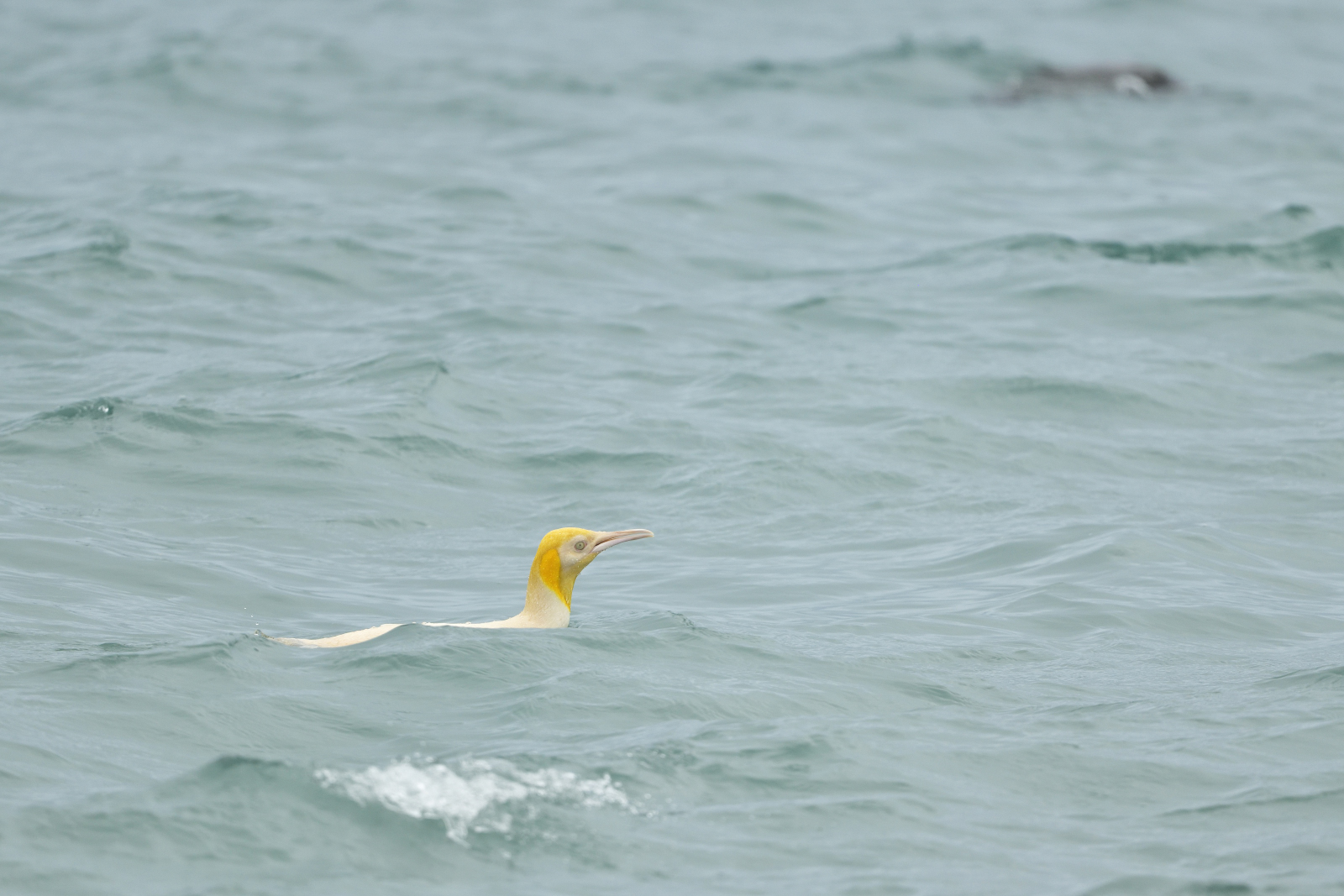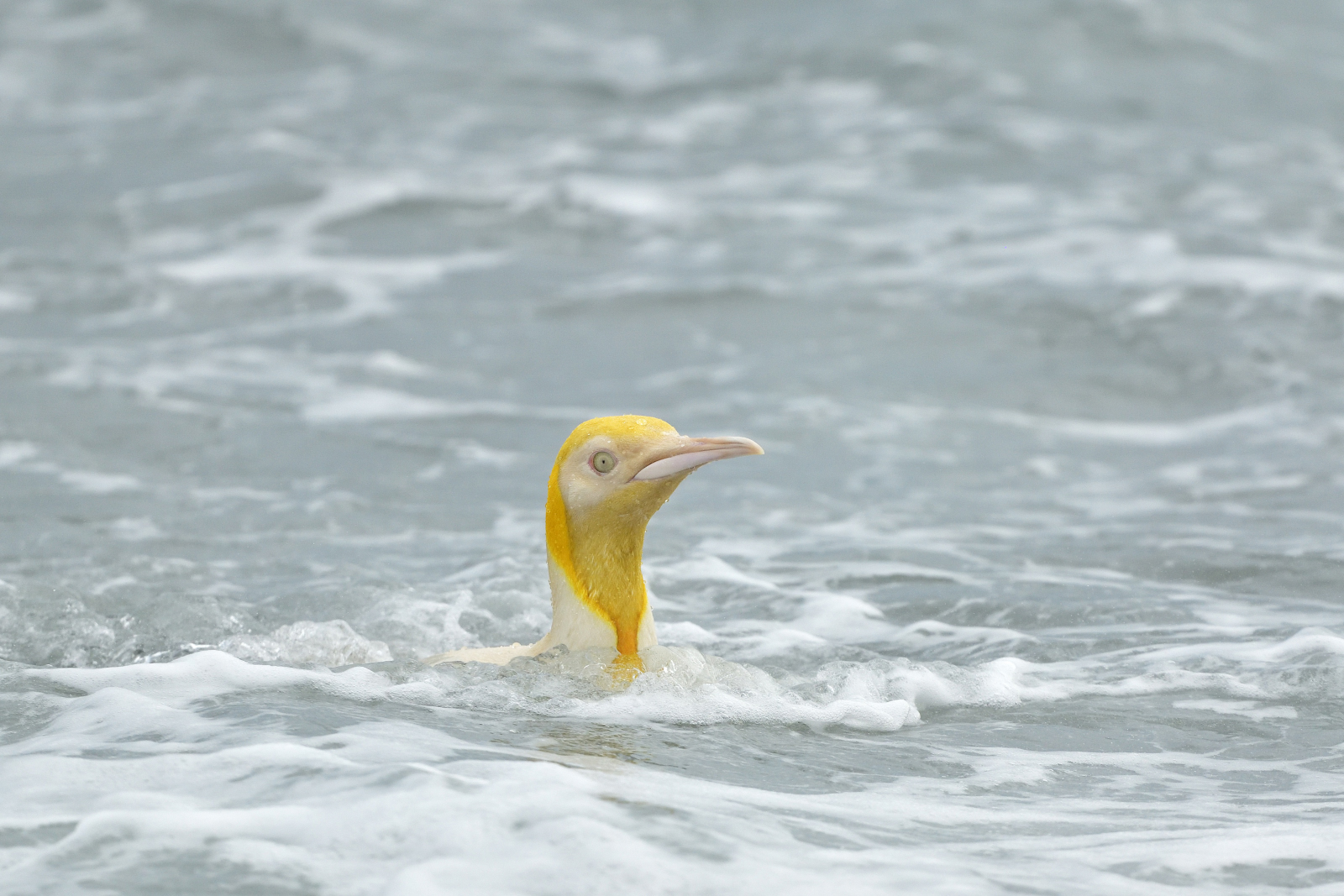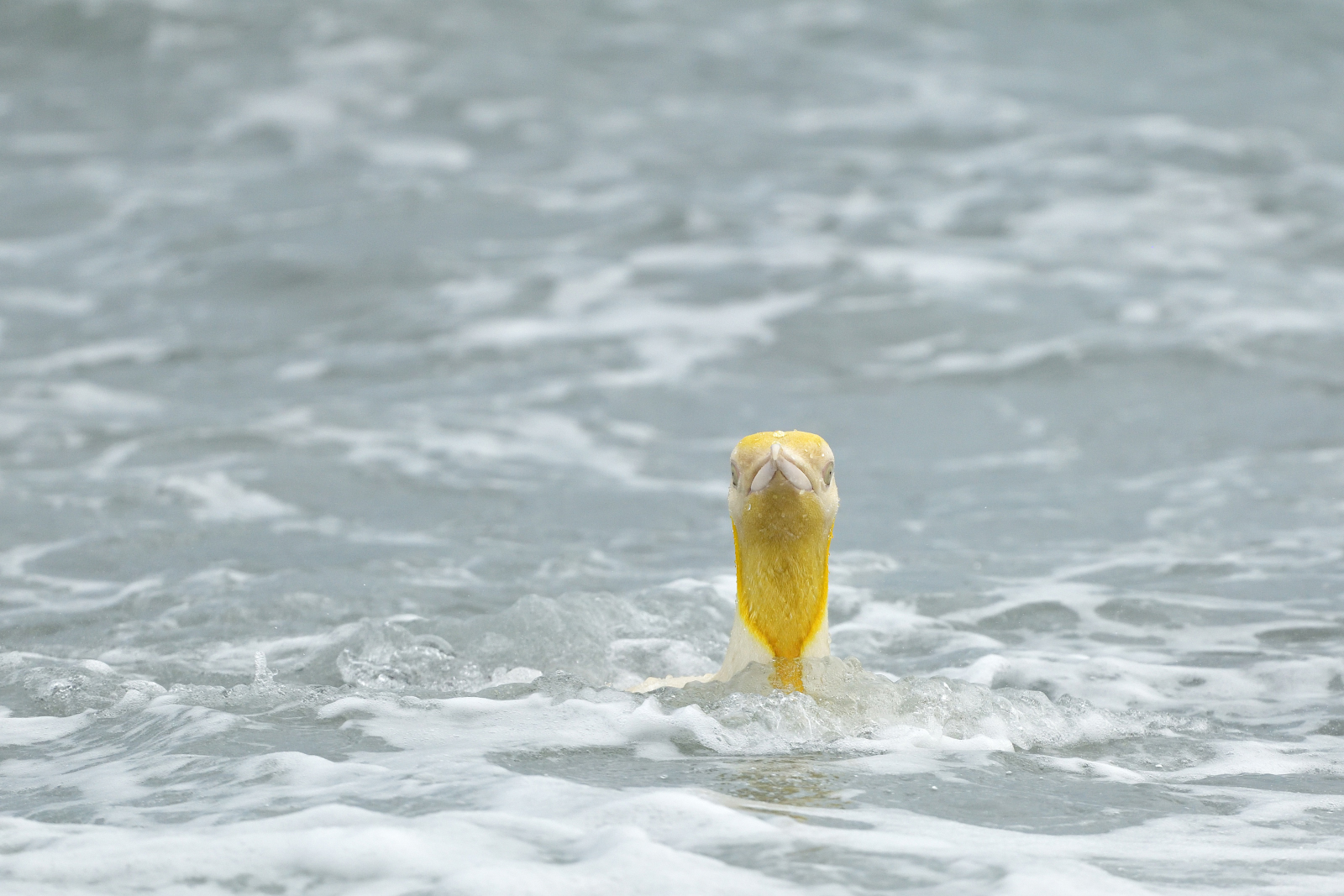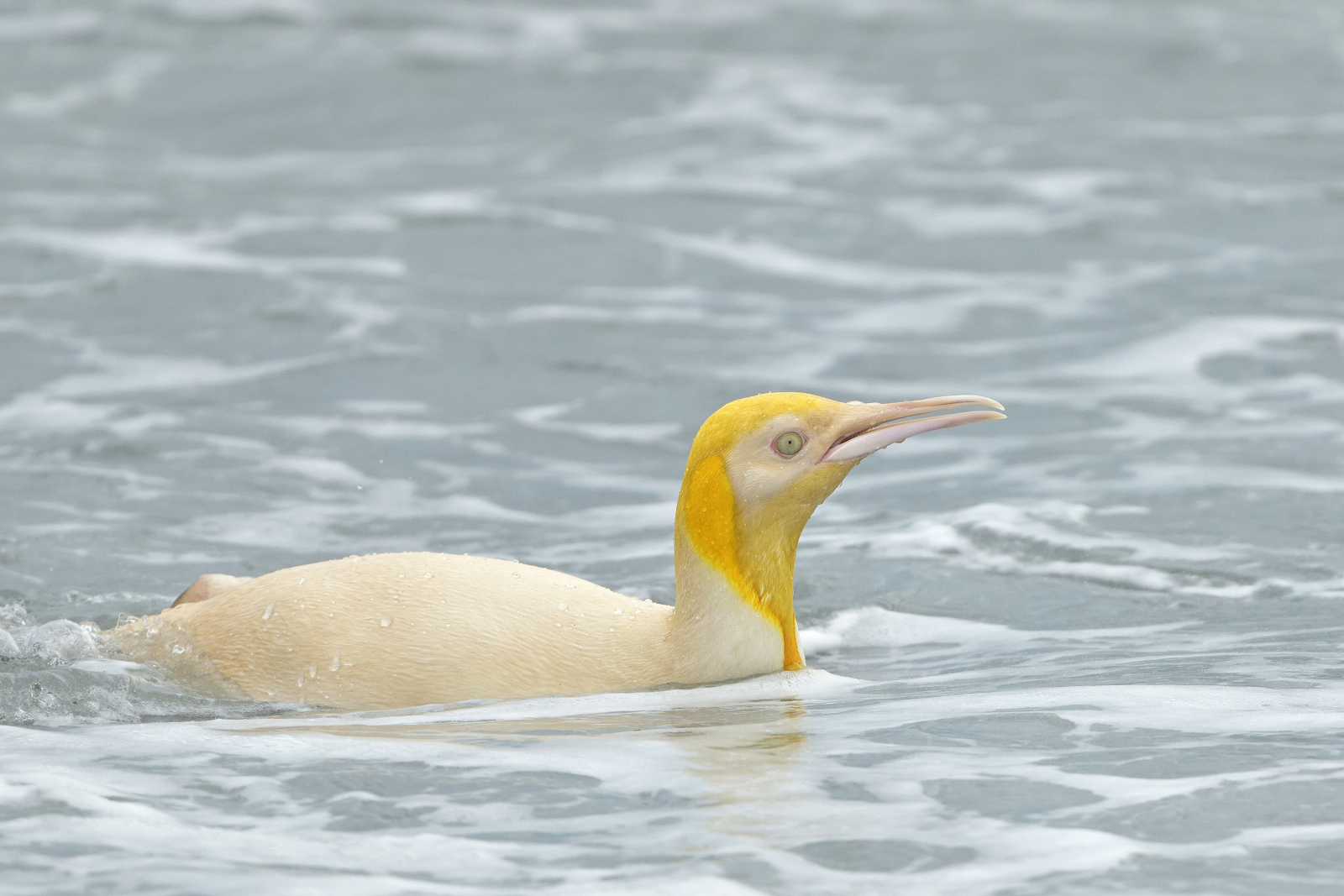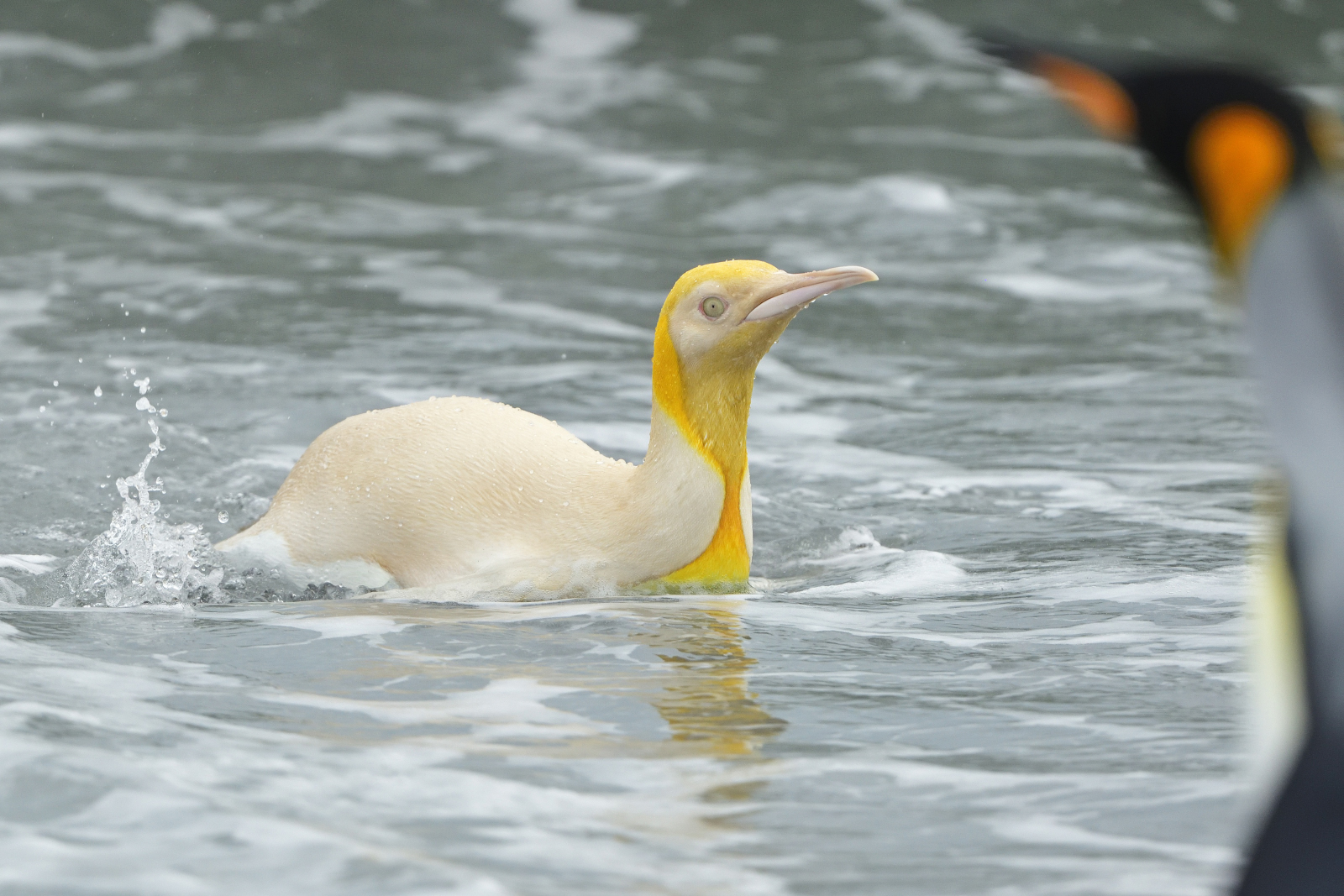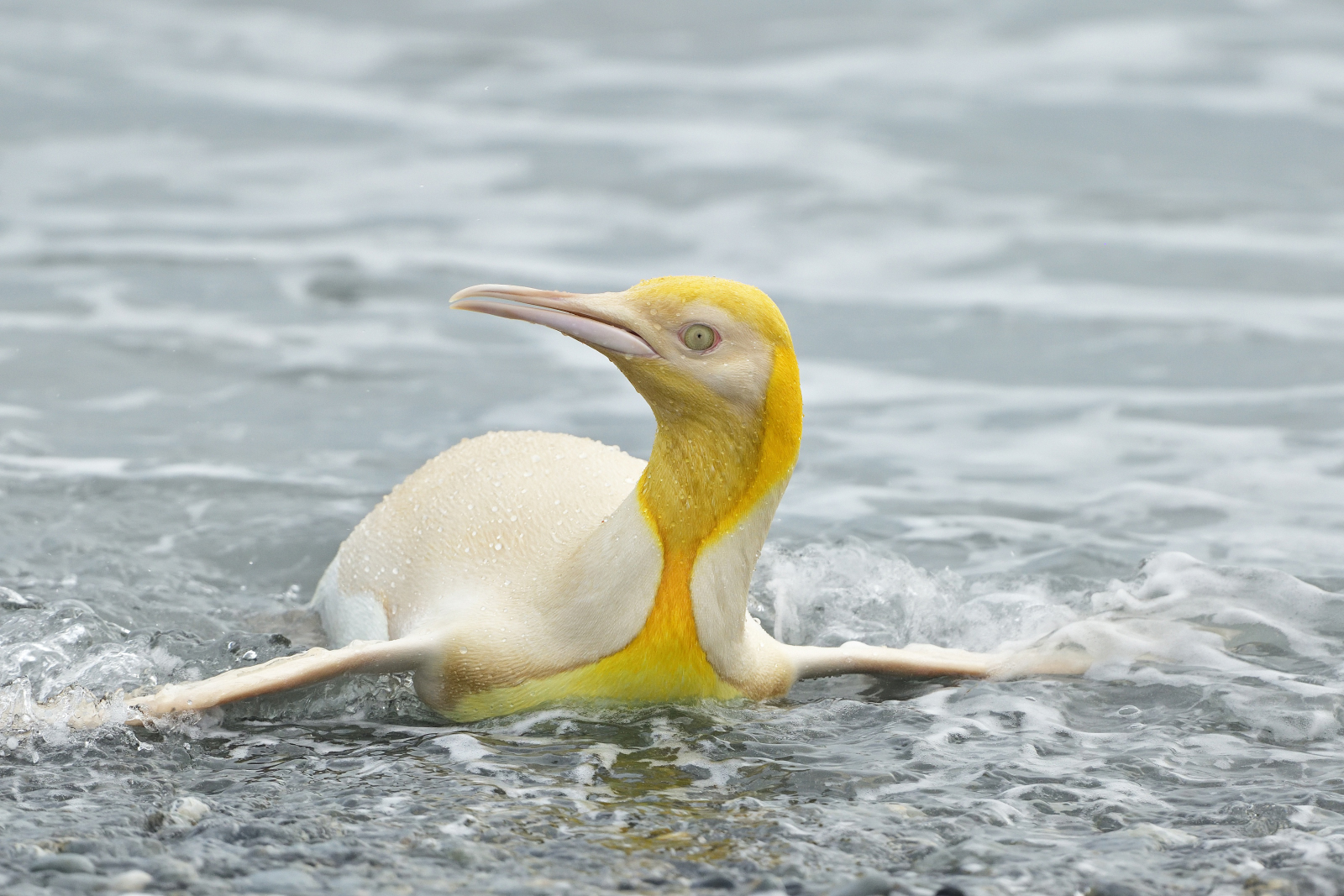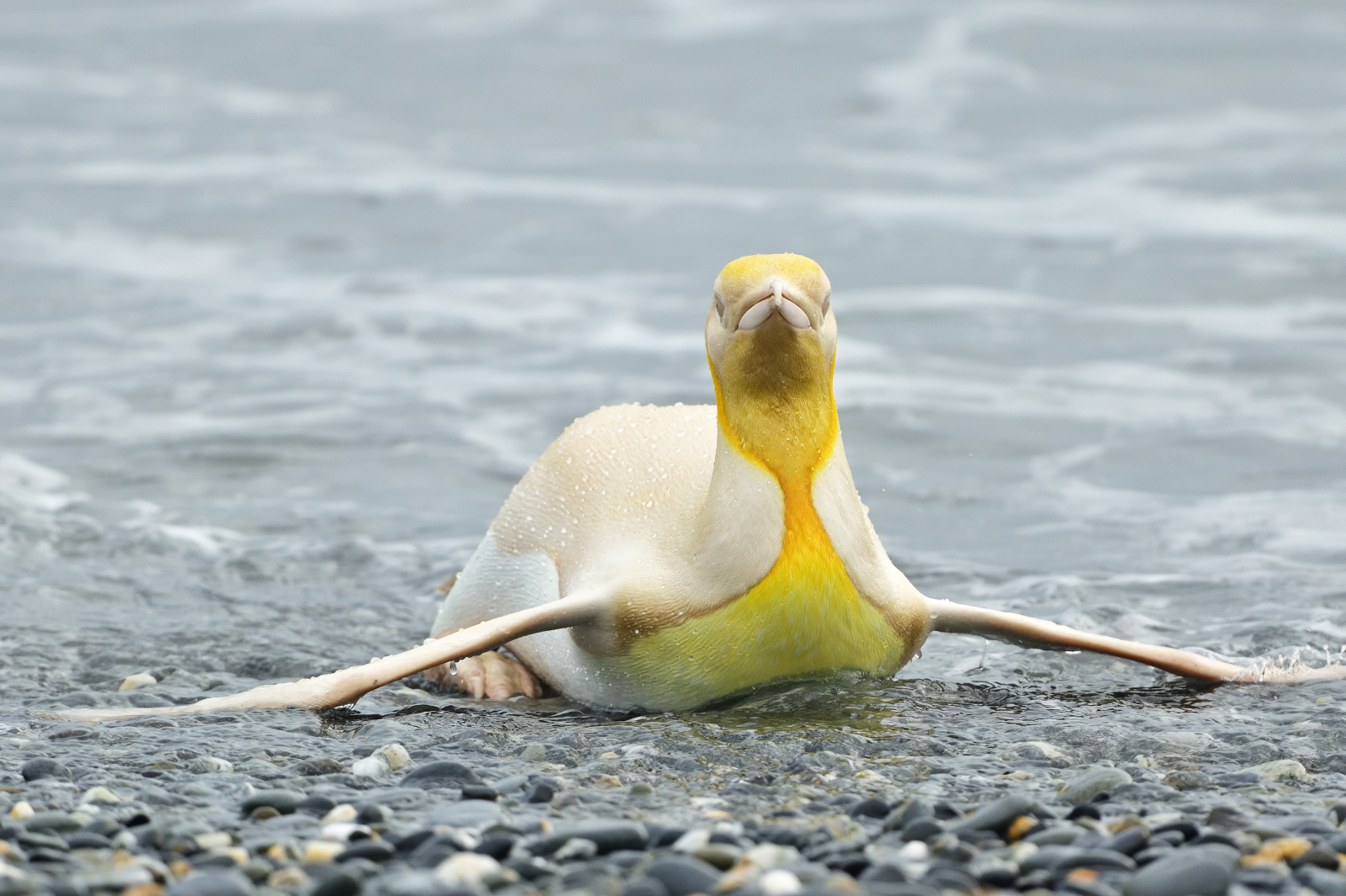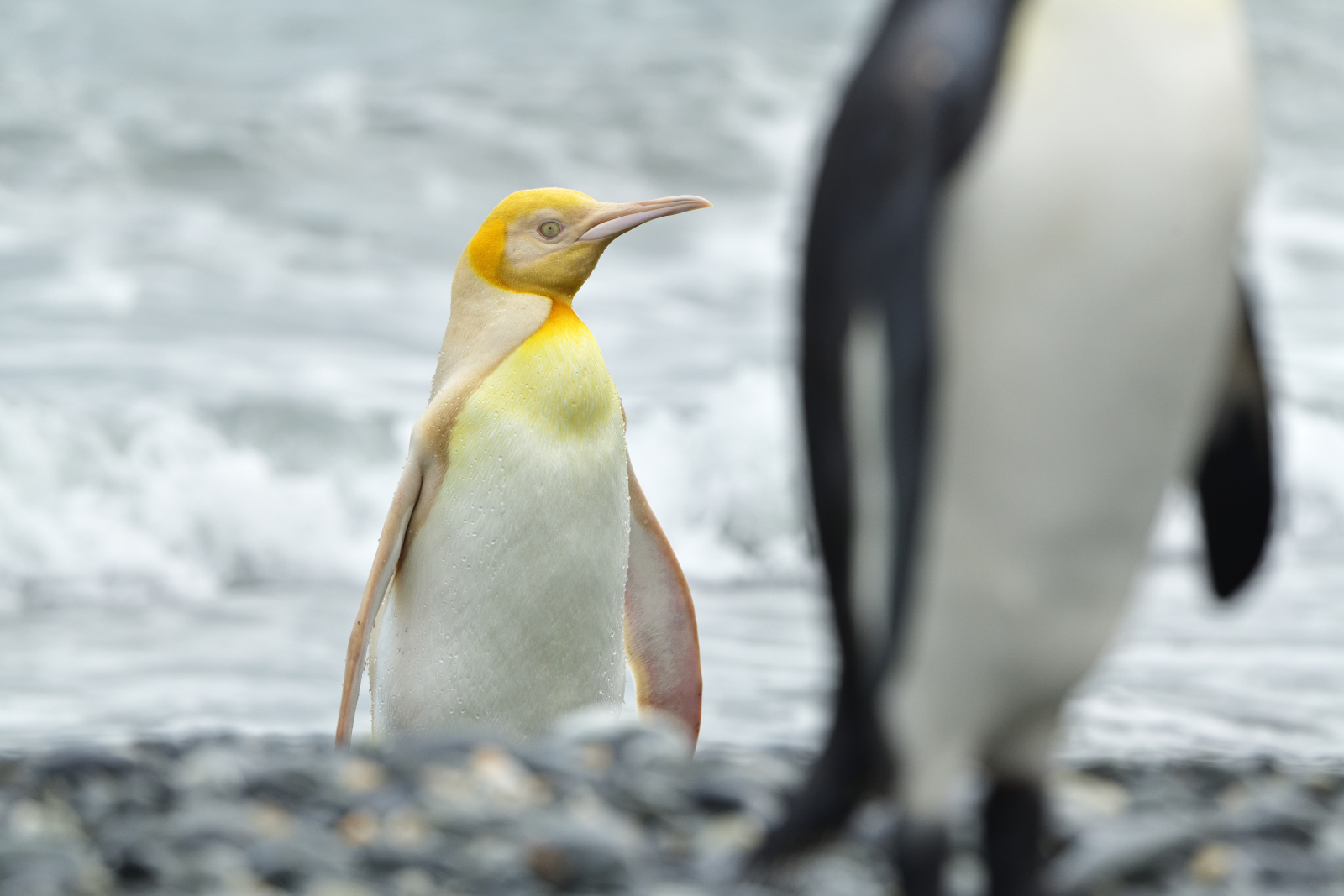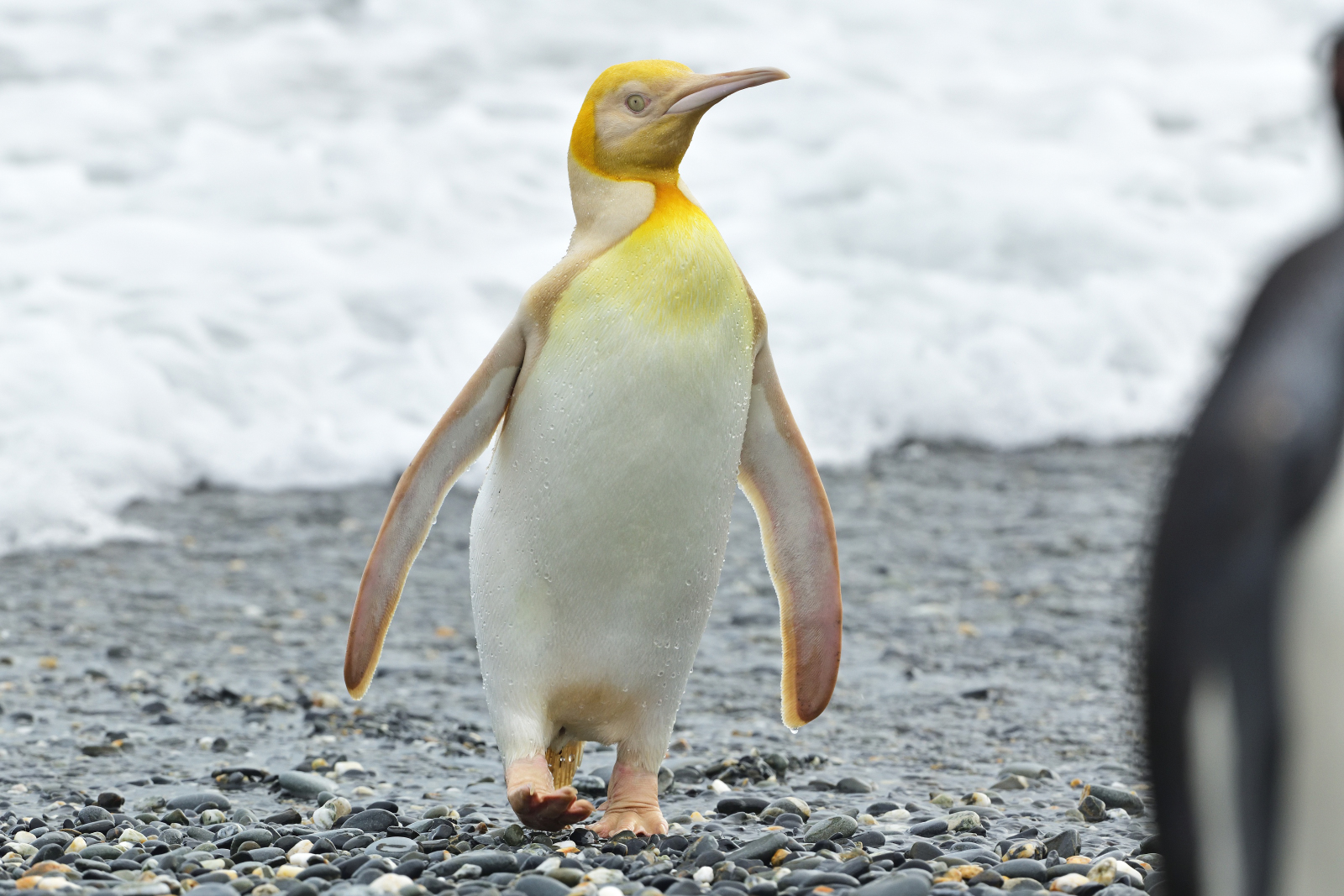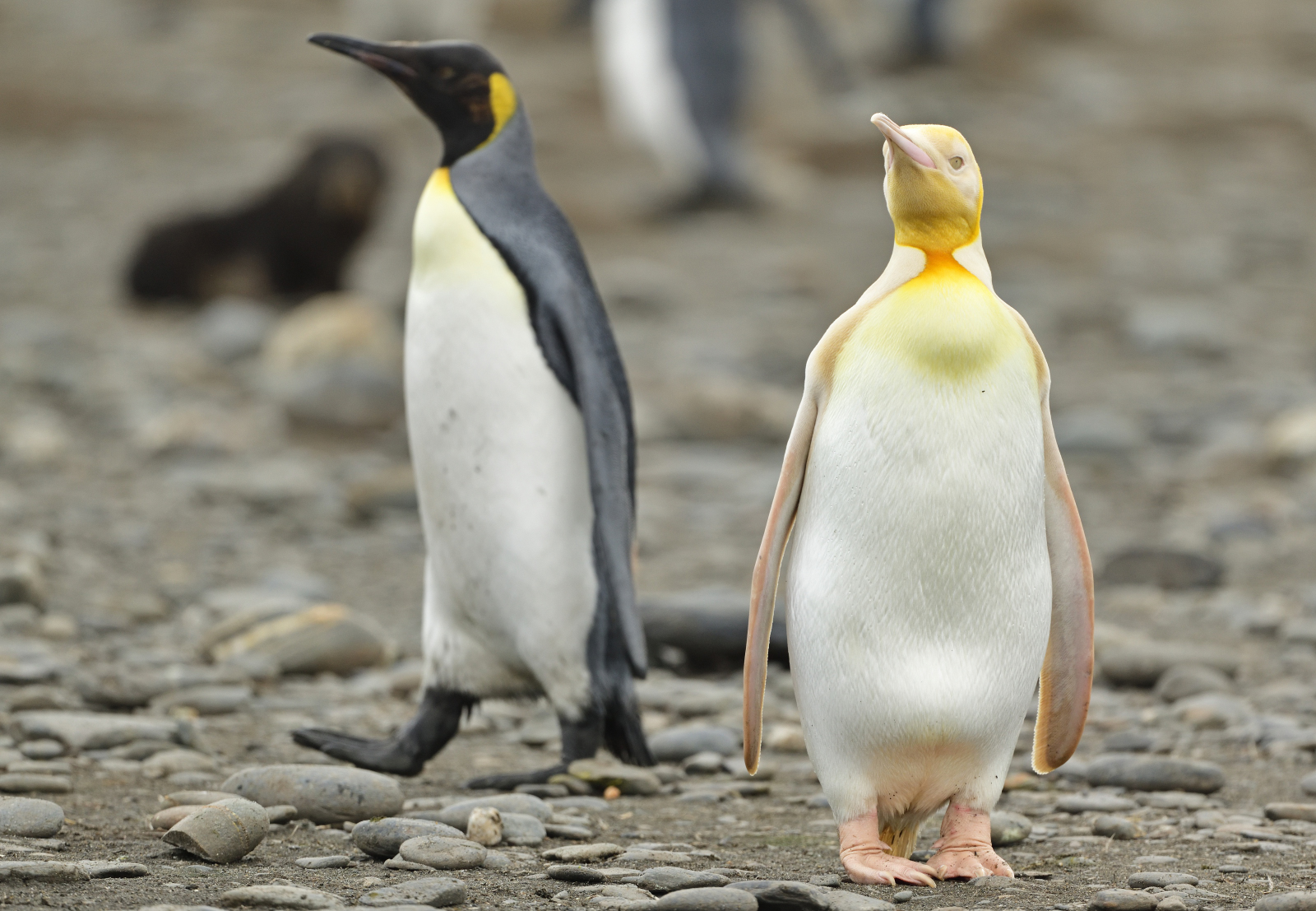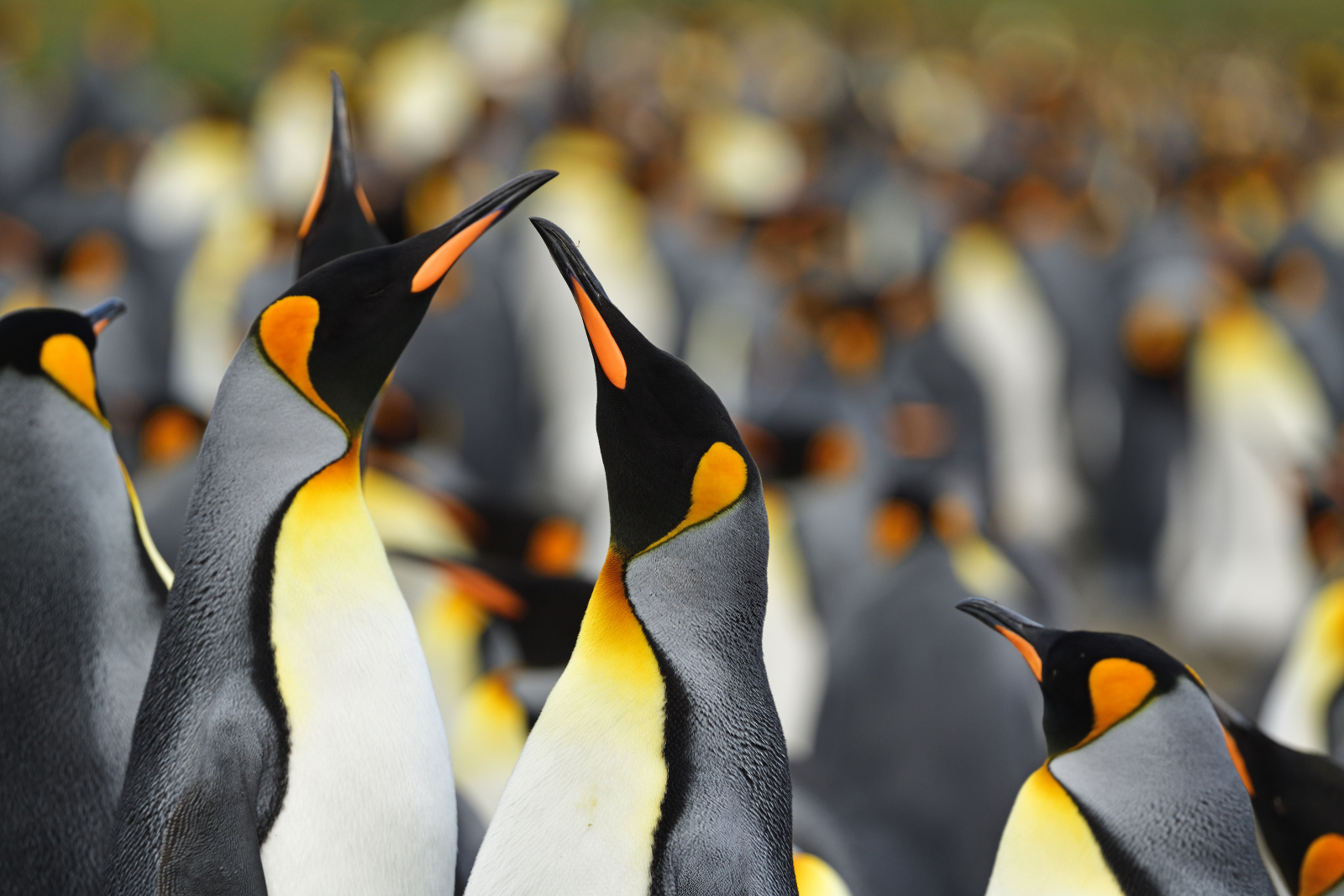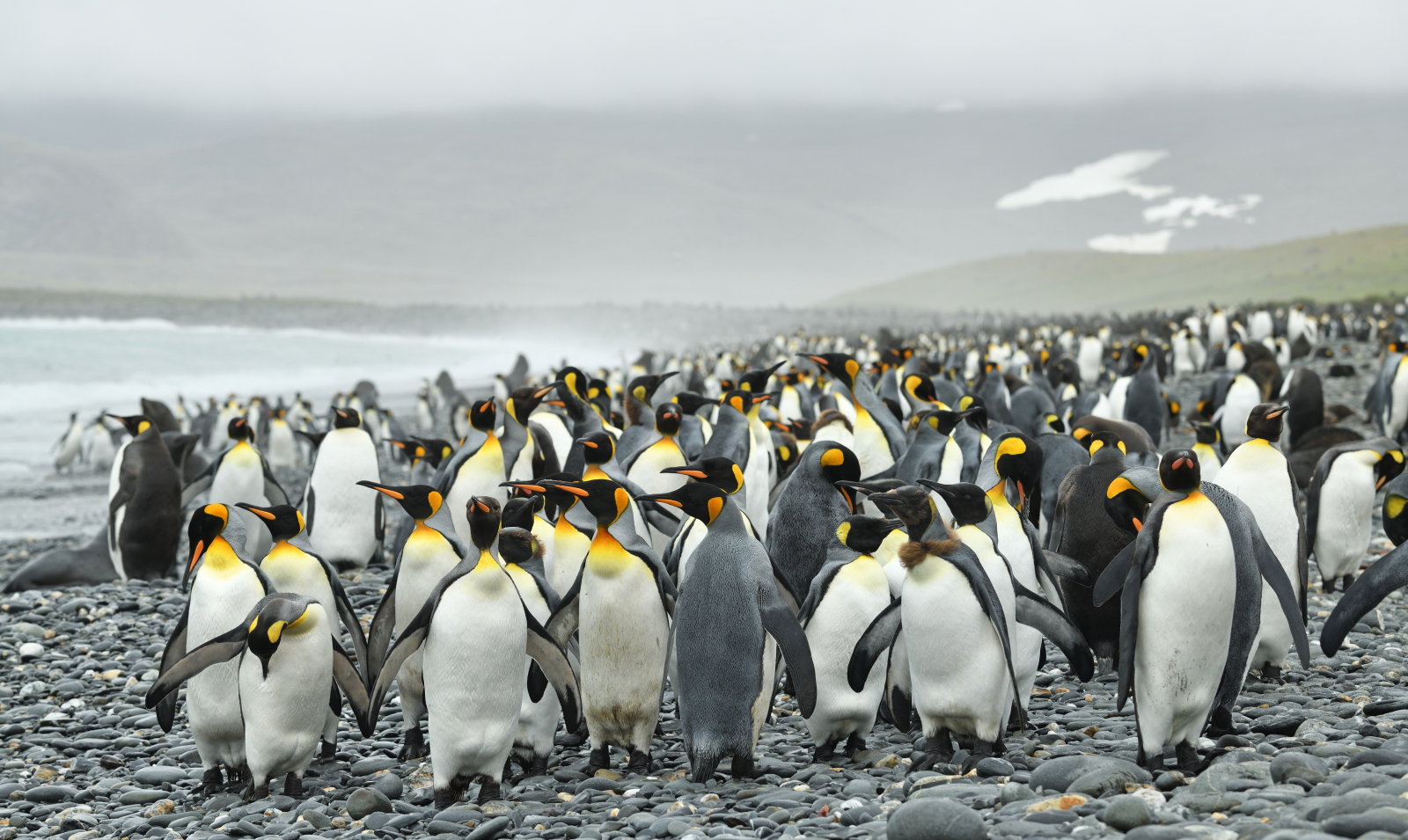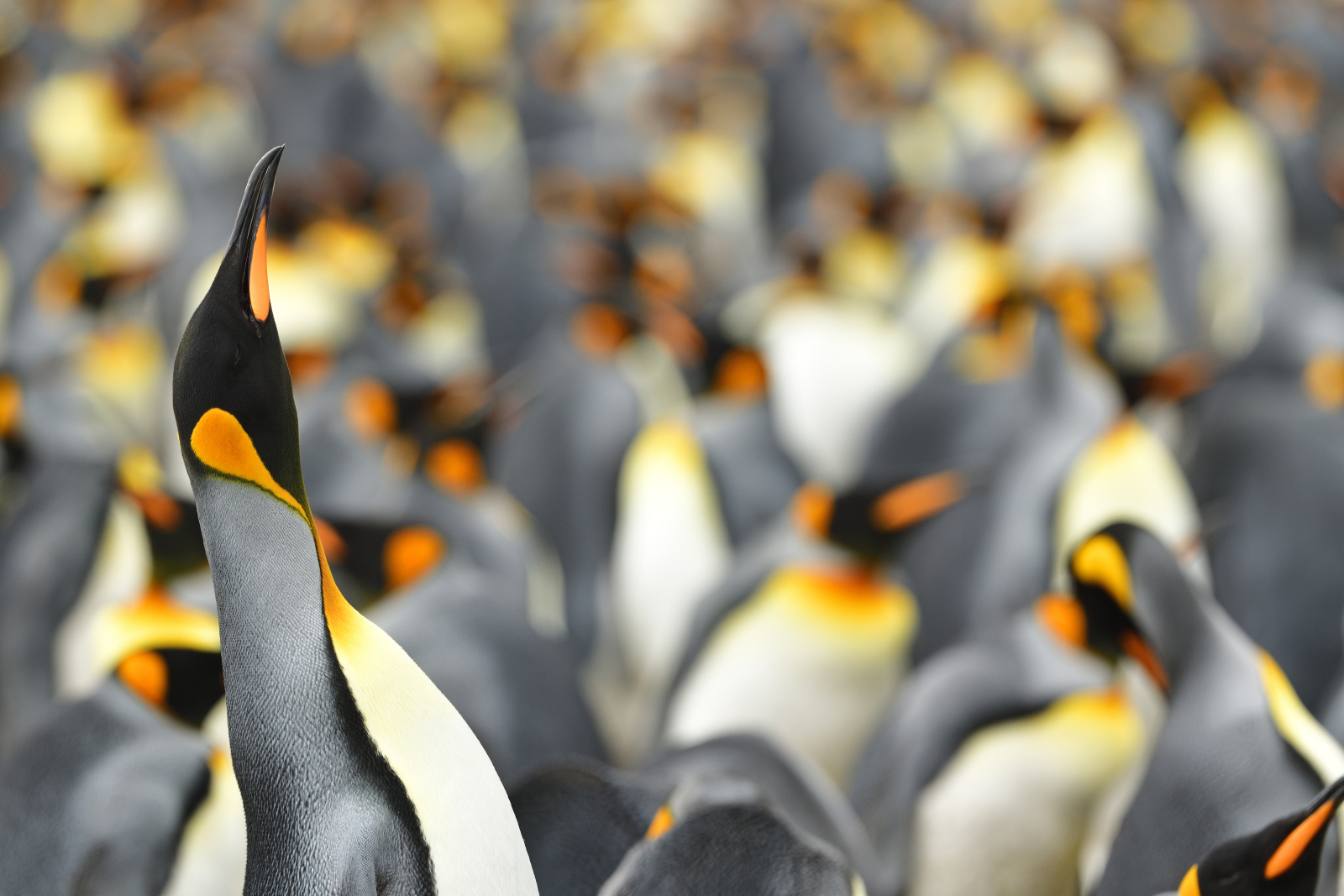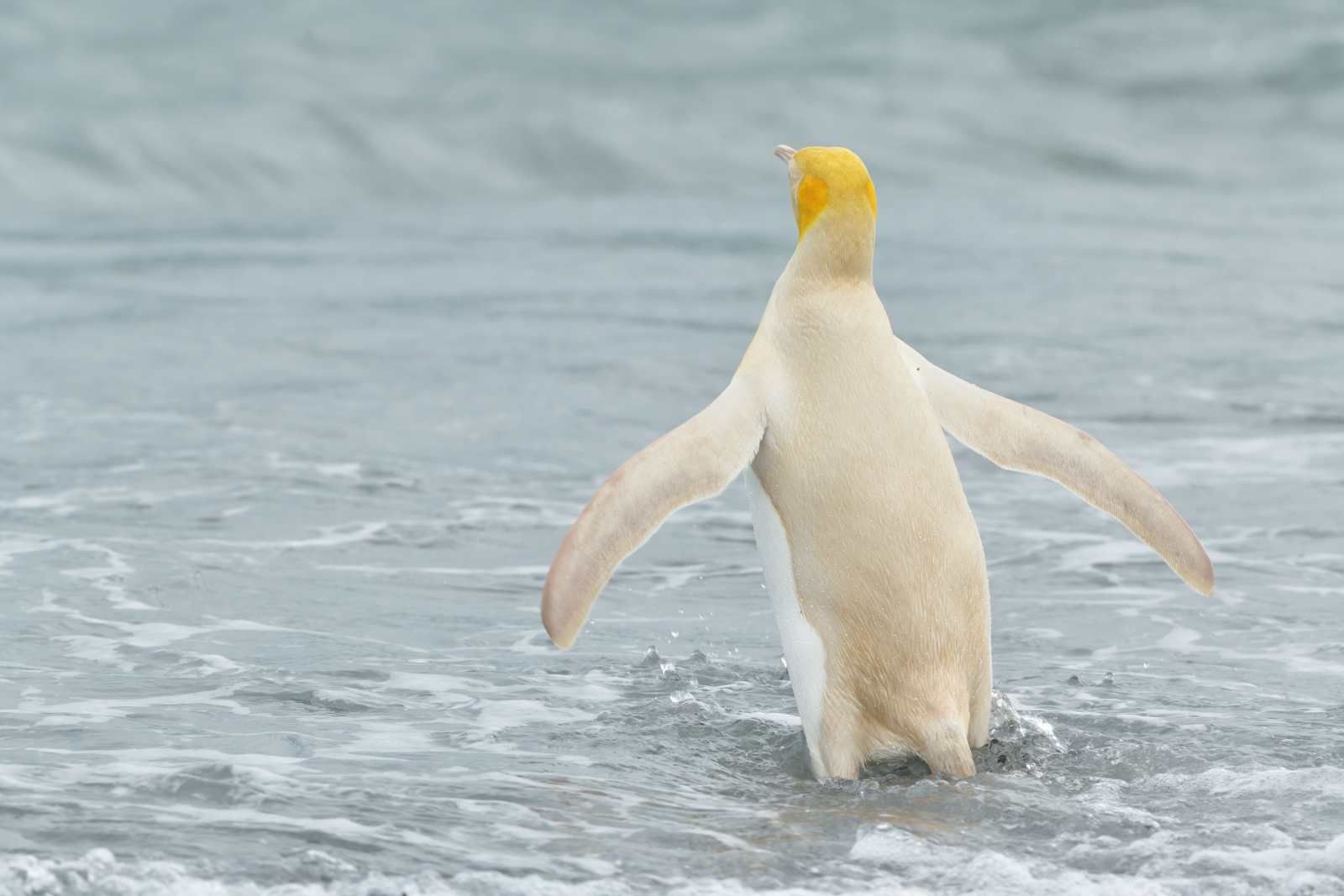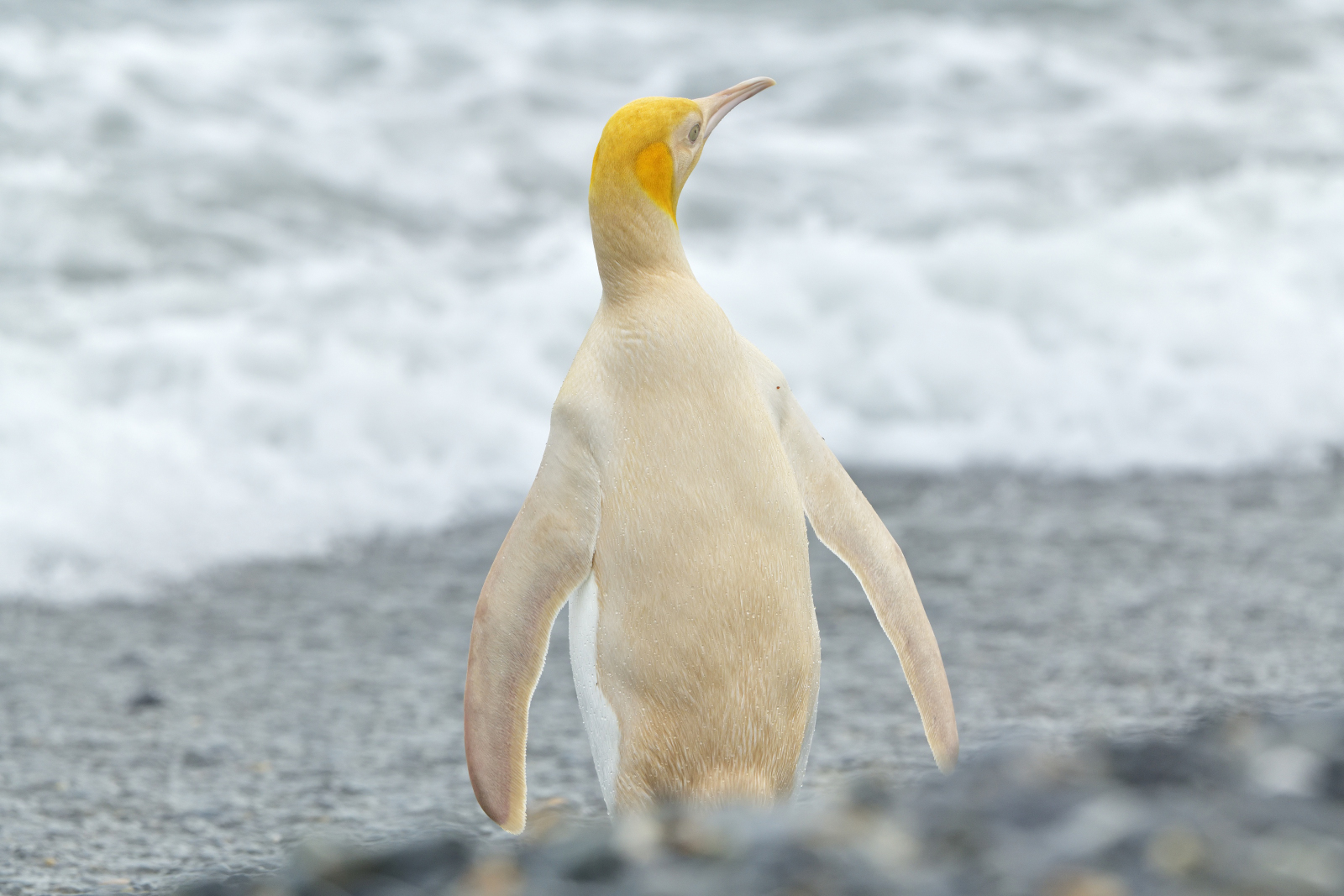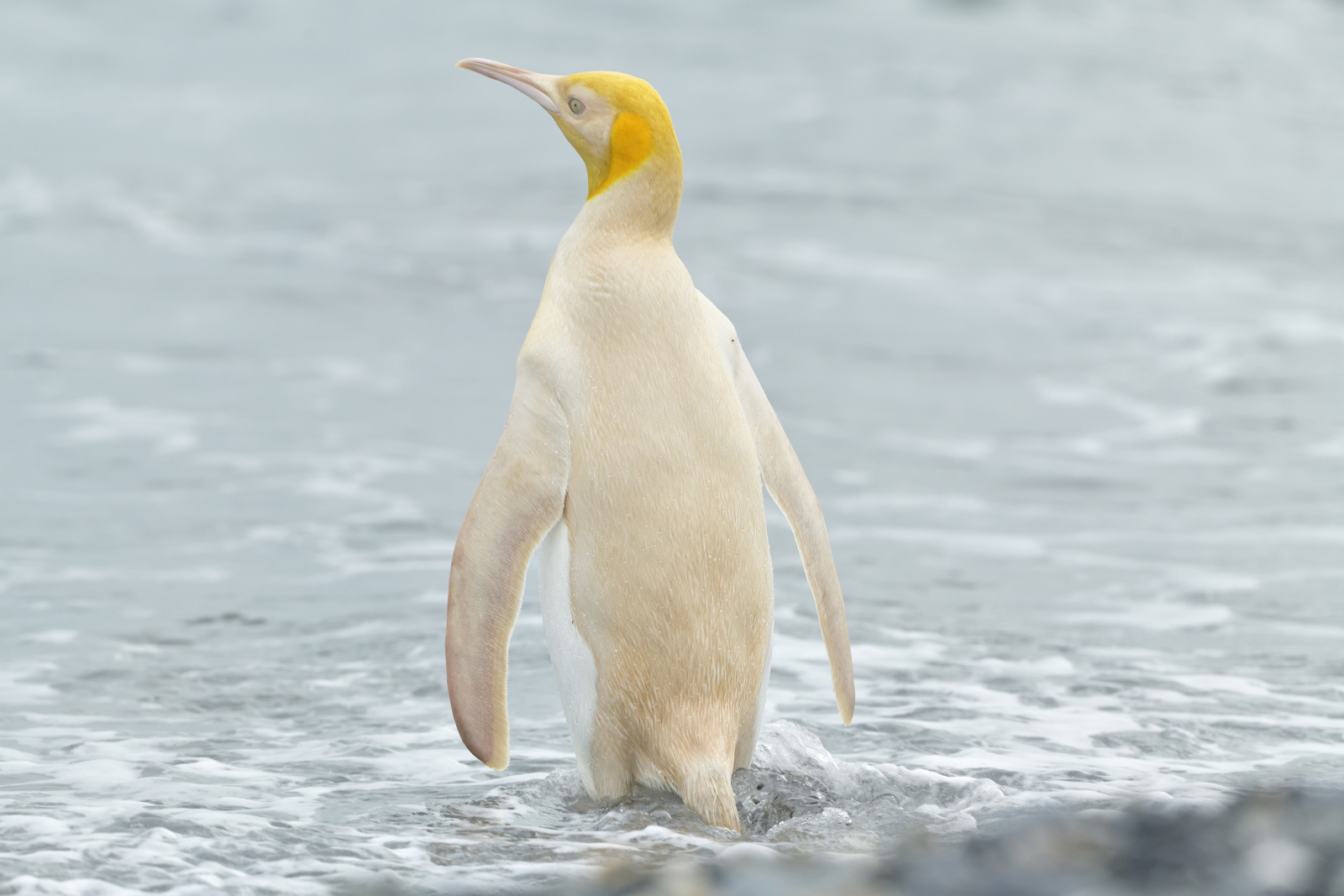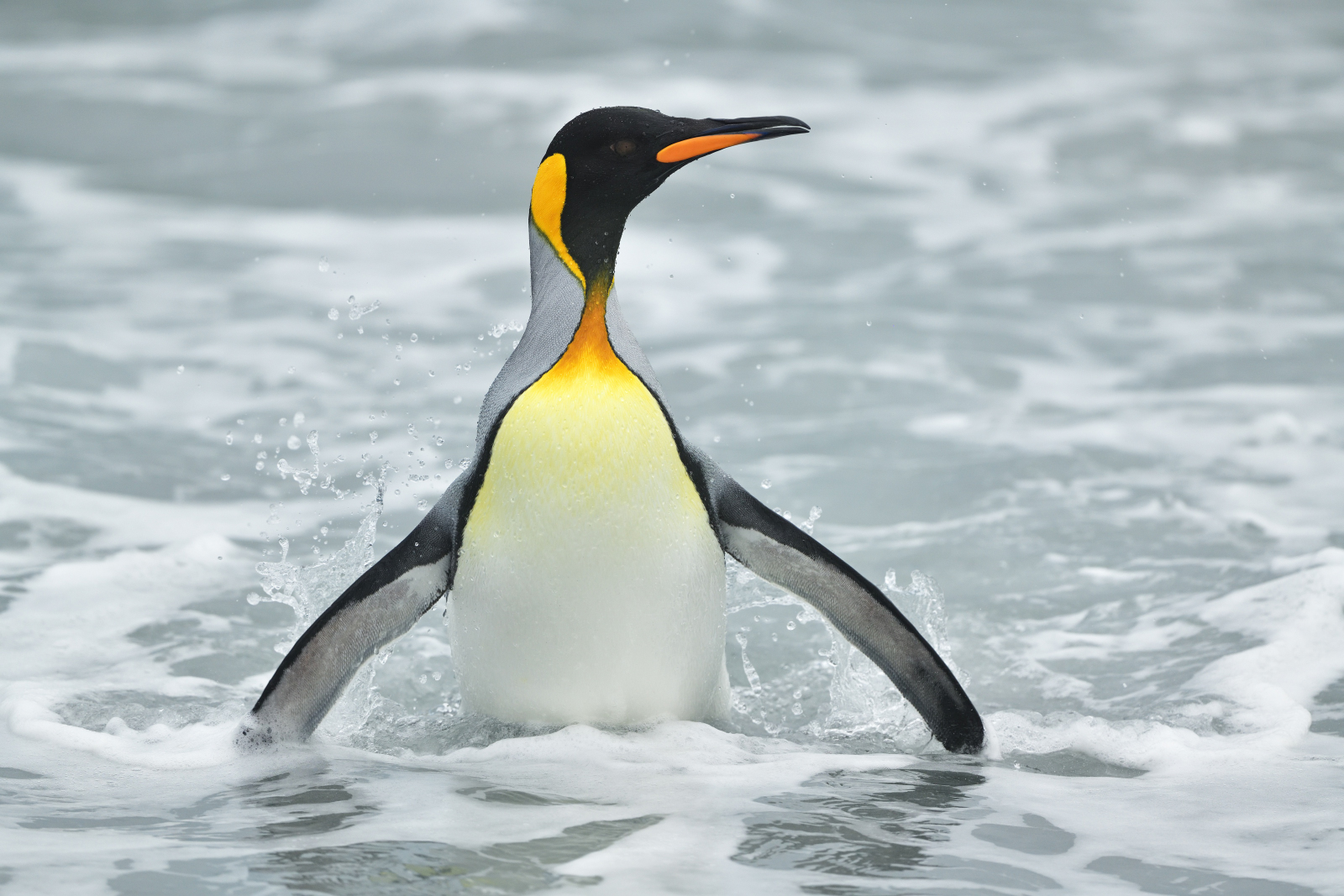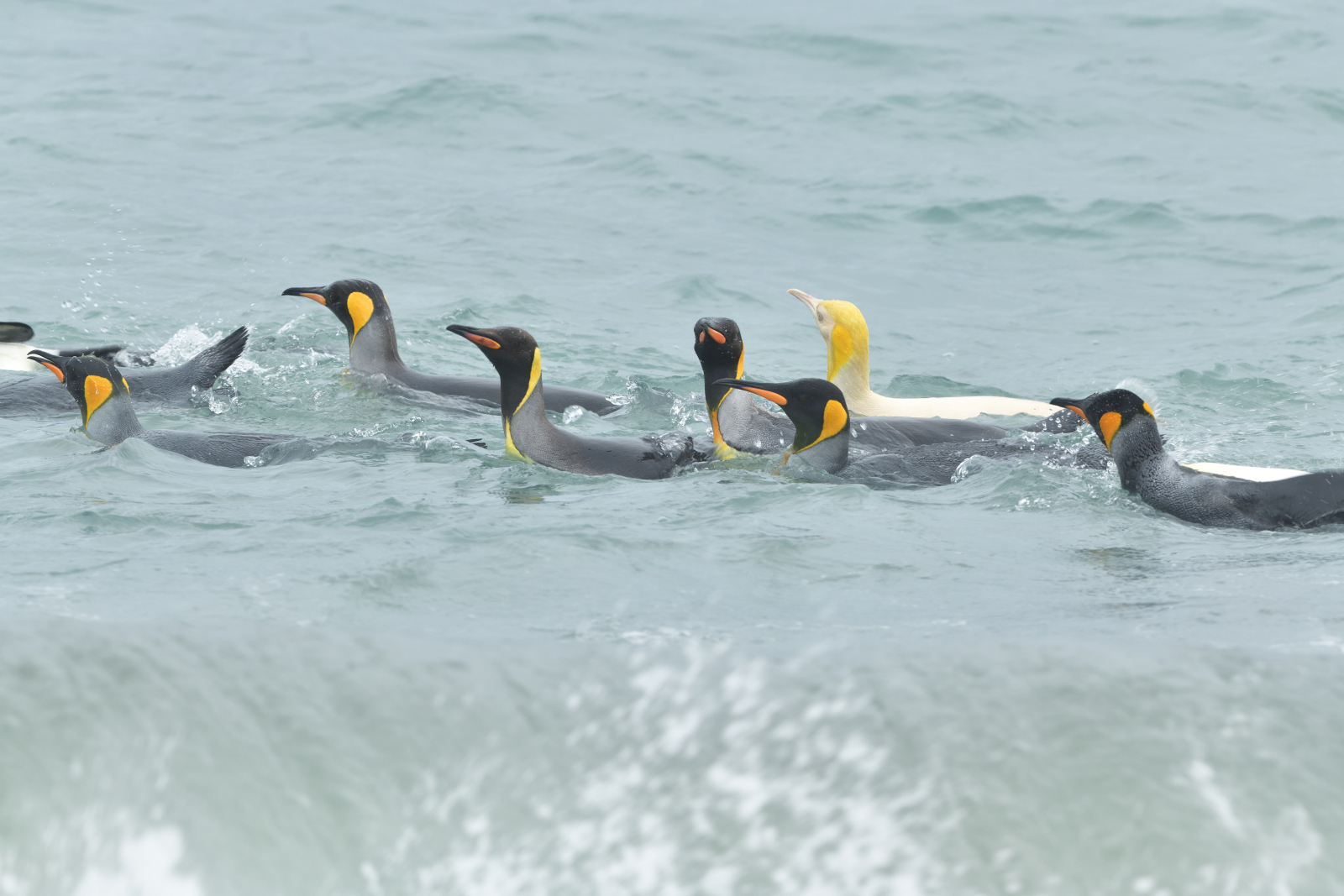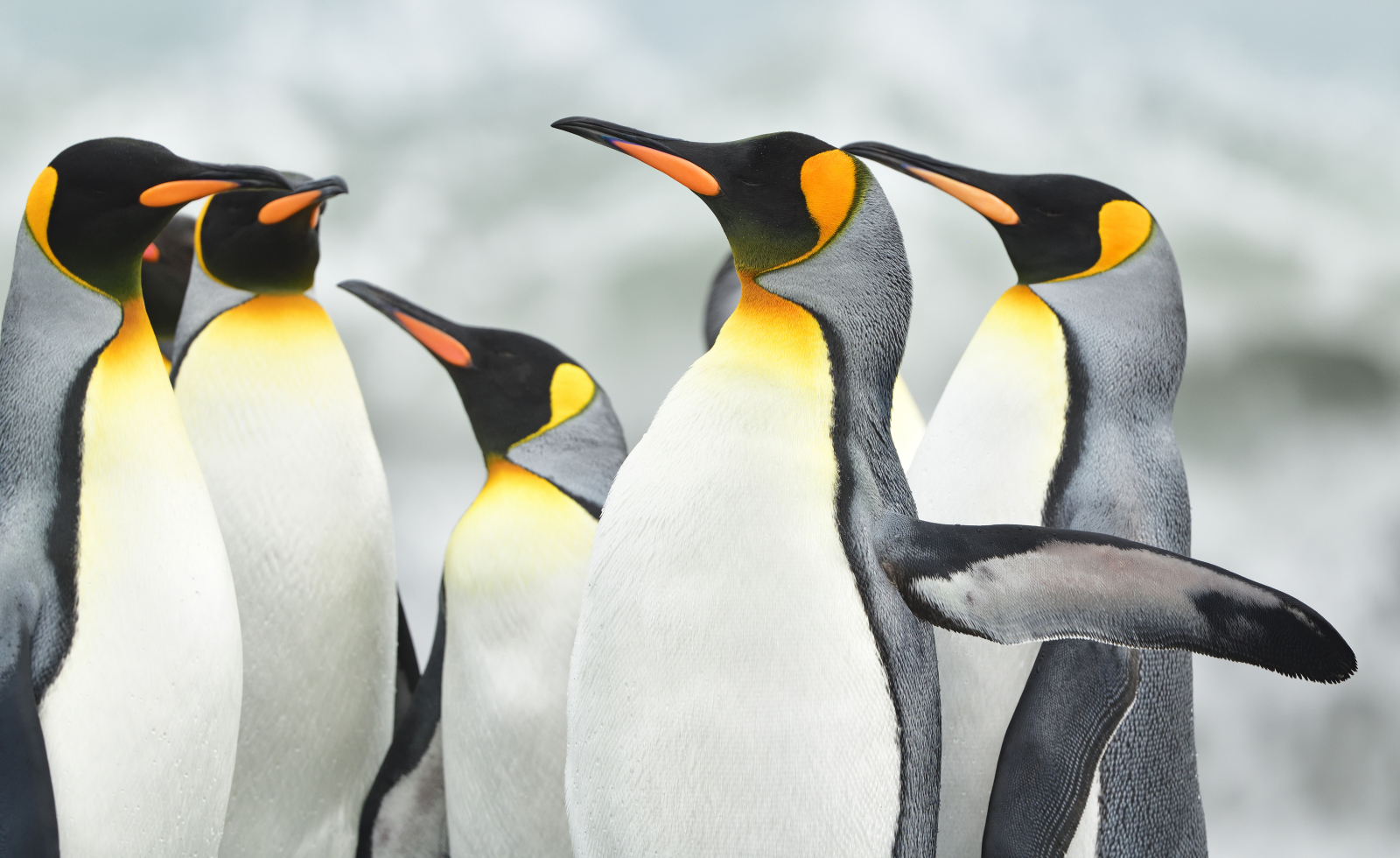Apparently, publishing pictures of rare animals can send you on a roller-coaster ride for days. And suddenly, you find yourself talking to people from all over the planet.
Or at least, that’s what happened with the images I took of this yellow fellow — a leucistic penguin I photographed on an expedition in South Georgia in 2019. They went viral and reached hundreds of thousands of people within just two or three days through the power of social media, national and international press coverage, and wildlife and photography platforms.
I’m very grateful for this exposure and delighted to share my story on this blog.
Landing on the beach of Salisbury Plain
Travelling to South Georgia as a nature photographer is a huge privilege in itself. So when Quark Expeditions asked me to join a 2 month-expedition to Antarctica and South Georgia, it was a dream come true.
South Georgia is a vast, magnificent, but very inhospitable region in the southern Atlantic Ocean. We decided to land on Salisbury Plain, a coastal plain in the Bay of Isles, beautifully situated between 2 glaciers. This plain is only about 1km wide but home to an immense and incredibly dense population of over 120 000 king penguins and thousands of fur and elephant seals — all quite territorial animals. Add the rocky surroundings and a heavy current, and you can imagine that landing a Zodiac safely on one of the small bays is no picnic. More often than not, we have to return without ever setting foot on land.
Yet, this time, we managed to moor and descend from the boat. I went ahead of the expedition team to get some clean images. As I was unloading tents, rations and safety gear from the Zodiac (storm-preparedness is always required, as it can get you stuck on the plain for days), I was very aware of the many animals around me and all the penguins that were swimming in the surf. That’s when, all of a sudden, I noticed a bright yellow penguin approaching us through the waves.
I immediately dropped my bags to get my binoculars and camera out. Being a juvenile, this penguin was very curious and decided to approach me rather than swim away. That’s how I got a window of 2 to 3 minutes to take these incredible, once-in-a-lifetime shots before it wandered off and disappeared into the colony.
One in a million
So yes, yellow penguins exist! But no, there’s no yellow penguin-tour in the making. The odds of ever seeing an individual like this again are one in a million.
This penguin is leucistic – or ‘ino’, to be more specific. Counter to albinism, the condition causes only a partial loss of pigmentation, leaving the feathers and eyes with very little melanine. While seeing a leucistic penguin is already rare, they are usually white or patchily coloured (remember the white penguin spotted on the Galapagos Islands late 2020?). With this little fellow, the strong loss of melanine allows the yellow pigmentation in the black feathers to become visible, making it look yellow and creamy and matching the pigmentation of its neck and head.
The result is a real-life, tropical-looking yellow penguin, standing out between 120 000 other penguins on the bay and between the estimated 4,4 million king penguins on the planet. A real survivor with many challenges ahead, as it’s sure to attract attention wherever it goes.
Zoom in on arctic wildlife
Having so many people reach out to me with a genuine interest in my work has been a fantastic experience for which I am profoundly thankful. Every passionate nature photographer deserves to experience a lucky shot like this at least once in their careers.
For the photographers amongst you, here’s some info about the gear and how to prepare it for arctic photography.
I was very fortunate to have brought the amazing Nikon AF-S 500mm F5.6 PF lens with me on this expedition, and I always had a Nikon D850 attached on it. Always ready for surprises like this. This combination of camera and lens provided me the detail and speed I needed for action photography. Being a prime lens, the 500mm lens enabled me to get a wonderful bokeh, which is nice in dense colonies of penguins, when there is always some disturbing background details.
I look forward to my next Arctic expedition! Want to join me and improve your photography skills? Get in touch and drop me a line, so I can keep you posted about upcoming tours!
